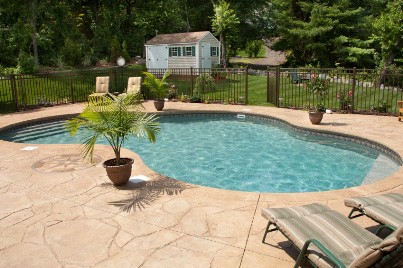How to avoid diving into home insurance troubles with your backyard pool
Few things are more inviting than a swimming pool on a hot summer day. Before you invite friends and family to a pool party at your house, however, you may want to check your home insurance policy.
A backyard pool can be an oasis or an expensive nuisance, says Kevin Foley, owner of PFT&K Insurance Brokers in Milltown, N.J. “If you have a pool, no matter the size, personal liability insurance is very important,” Foley says.
A swimming pool creates a potential hazard for you as a homeowner and makes you liable for accidents. Unfortunately, pool accidents happen more often than you may think.
Drowning is common cause of kids’ deaths
According to the federal Centers for Disease Control and Prevention (CDC), drowning is the No. 2 cause of death for children age 1 to 14 and the sixth-leading cause of unintentional death for people of all ages.
About 300 children under age 5 drown in swimming pools every year; the pools usually are at their own homes. One-third of these drownings occur at pools owned by friends or relatives, according to the U.S. Consumer Product Safety Commission.
Alarmingly, most children who drown were being supervised by one or both parents and were out of sight for up to five minutes. More than two-thirds of children who drown weren’t even supposed to be in or around the pool but wound up in the water.
Are you fenced in?
Those statistics prompt some home insurers to refuse to sell coverage if a home has a pool but lacks a backyard fence. A fence can keep uninvited children from taking a dip in a homeowner’s pool.
“If you have a pool, but no fence, then what controls do you have from keeping kids from jumping in?” Foley says. “No controls? No insurance.”
“Safeguarding a pool with a perimeter fence or mechanical cover is something that every owner should do,” says Seth Gilman, senior vice president at Poms & Associates, an insurance brokerage in Woodland Hills, Calif.
A four-sided fence — one that completely isolates the pool from the yard and the house — reduces the risk of a child drowning by 83 percent, according to the CDC.
How much coverage do you need?
A home insurance policy typically carries $250,000 to $300,000 in liability protection, says Loretta Worters, vice president of the Insurance Information Institute. If you have a pool, you may want to boost your liability protection to as much as $1 million under what’s known as an umbrella policy. “It’s well worth the price to protect you,” she says.
That level of extra “umbrella” coverage costs $100 to $200 a year. Most people buy umbrella coverage as an individual policy from the same insurance company that provides their home insurance. “Some companies may write a package policy that includes home and umbrella,” Foley says.
The physical protection required for the pool (such as fences) is found in your home insurance policy under “appurtenant structures,” which includes stuff on your property that is not inside your house, according to Foley. Other “appurtenant structures” include detached garages, sheds and backyard satellite dishes.
Typically, your policy limits coverage for these structures to 10 percent of the amount of your home coverage, Foley says. For example, a $100,000 home might have $10,000 in coverage for your pool and garage.
When comparing insurance quotes, it’s best to work with a licensed agent who can get you the right kind of home coverage across the board for all situations.
Practice pool safety
Keep in mind these pool safety tips:
• Install four-sided fencing (at least 4 feet high) that completely separates the house and play area of the yard from the pool area.
• Use self-closing or self-latching gates that open outward with latches high enough to be out of reach of children.
• Consider alarms to notify you if someone enters the pool area.
• Remove toys from the pool and deck so children aren’t tempted to enter the area without supervision.
• Designate an adult to supervise young children at all times; adults should be close enough to reach the child and should not be involved in any other distracting activity such as reading or talking on the phone.
• Learn CPR.
• Teach young children to swim. However, this does not eliminate the need for adult supervision.
• Do not use flotation devices as substitutes for supervision.
• For above-ground pools, take away steps and ladders leading from the ground to the pool when the pool isn’t being used.
